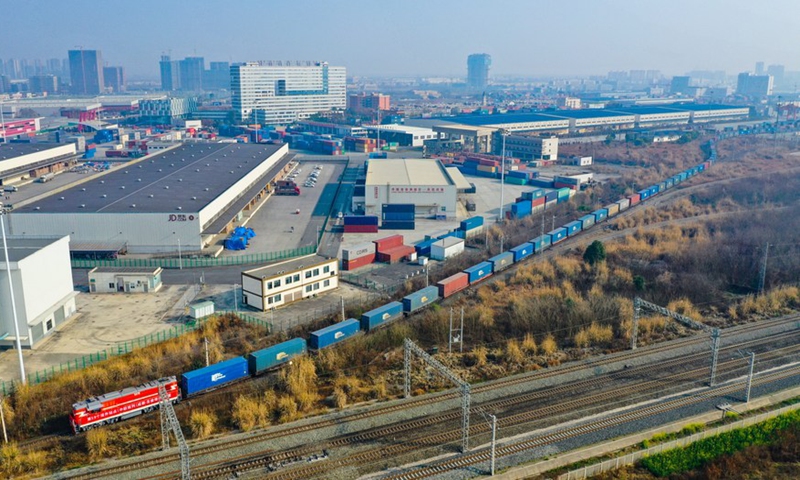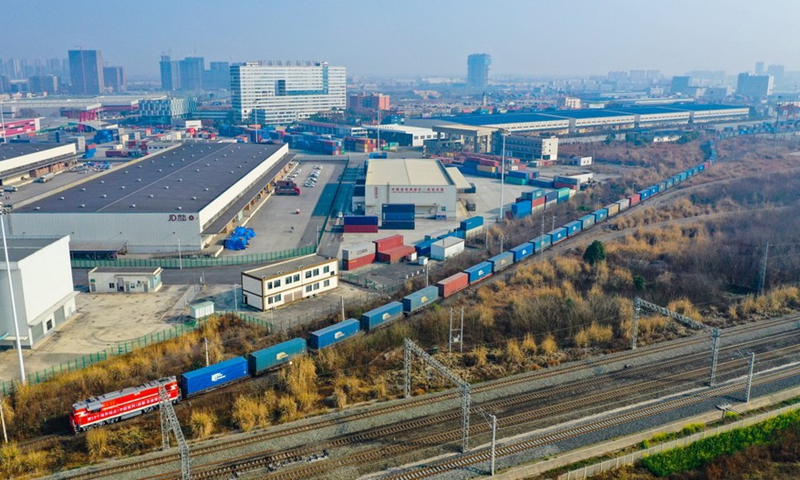
Children welcome Chinese President Xi Jinping in Belgrade, Serbia, May 7, 2024. Xi arrived in Belgrade on Tuesday to pay a state visit to Serbia. Photo: Xinhua
On Wednesday, Chinese President Xi Jinping held talks with Serbian President Aleksandar Vucic at the Palace of Serbia in Belgrade. The two leaders decided to deepen and elevate the comprehensive strategic partnership between China and Serbia, and build a China-Serbia community with a shared future in the new era. For the two countries and peoples, this is a significant event. Over the past few decades, the two countries have understood, trusted, supported, and helped each other in times of adversity, becoming true friends and close brothers. The upgrading of the two countries’ political relationship has come naturally, opening a new chapter in history.
President Xi visited Serbia again after eight years, receiving a grand and warm welcome. The national flags of China and Serbia flew along the highway from Belgrade Nikola Tesla Airport all the way to the city center of Belgrade. Banners showing “Welcome President Xi” and “Warm welcome to endeared Chinese friends” were prominently displayed. Thousands of Serbian people shouted “China” and “Serbia” in front of the Palace of Serbia, showing their genuine emotions, which deeply touched and moved the Chinese society.
China and Serbia enjoy “ironclad friendship,” which is extraordinary in the ever-changing international relations. The ironclad friendship between China and Serbia has been tempered by blood and fire. In 1999, NATO bombed the then Federal Republic of Yugoslavia; in 2008, China experienced a major earthquake in Wenchuan, Southwest China’s Sichuan Province; in 2014, Serbia suffered severe floods; and in 2020, the COVID-19 pandemic broke out. The two countries and their peoples always extend a helping hand without hesitation when the other is in need, and this true friendship of mutual assistance cannot be eroded by time. The fundamental reason lies in the mutual respect, equal treatment, and high mutual trust between the two countries.
The interaction between China and Serbia is phenomenal and should be a subject of research in international relations. For those obsessed with “great power competition” and “clash of civilizations,” it should especially stimulate their thinking and reflection. Despite the vast distance, different social systems, and diverse cultural backgrounds, China and Serbia are able to resonate and reach consensus on international affairs, national development, and national sentiments. They have formed a close interdependence on the basis of independence, which is a breath of fresh air in the current international community plagued by a “trust deficit,” setting an example for state-to-state relations.
Observing the relationship between China and Serbia, two characteristics can be discerned. First, the interactions and cooperation between the two countries serve the well-being of both nations and their peoples. China and Serbia firmly support each other’s core interests and major concerns. China supports Serbia’s efforts to uphold national sovereignty and territorial integrity, opposing any interference in Serbia’s internal affairs by external forces. Serbia steadfastly adheres to the one-China principle and supports China in safeguarding its own sovereignty and territorial integrity. On the core issue of safeguarding national unity and opposing territorial separatism, the two countries share a high degree of consensus.
Meanwhile, cooperation between the two countries is deeply rooted at the grassroots level. Within just a few months of investment by a Chinese company, the Smederevo Steel Plant has turned losses into profits, ensuring job security for over 5,000 employees and now standing as Serbia’s third-largest exporting enterprise. The municipal sewage treatment project “Clean Serbia,” undertaken by China Road and Bridge Corporation, will benefit 2.3 million Serbian citizens. As a key project under the framework of China’s cooperation with Central and Eastern European countries in building the Belt and Road Initiative, the Belgrade-Novi Sad section of the Hungary-Serbia Railway in Serbia is bringing about “revolutionary changes” in Serbia’s transportation sector. For the people of both countries, the cooperation is not empty talk but tangible win-win outcomes.
Second, China-Serbia cooperation, whether for the region or the globe, is a positive force. As ironclad friends and upholders of world peace, the two countries share similar positions on many significant international and regional issues. In international organizations such as the United Nations and various major multilateral events, they cooperate closely, jointly advocating for a fair and orderly multipolar world, and inclusive and equitable economic globalization. They practice genuine multilateralism. Confronted with the complex and tumultuous international landscape, both nations join hands to oppose hegemonism and power politics, striving to safeguard global peace, stability, and international fairness and justice.
What sustains the development of relations between China and Serbia is a high degree of political mutual trust. Both countries do not allow ideological differences and value systems to create rifts, nor do they engage in “de-risking” or pan-politicization. Instead, they listen to each other’s concerns, respect and support each other’s development paths and national rejuvenation. It is on this foundation that mutual trust can continue to accumulate, mutual understanding can be cultivated, and the space and willingness for cooperation can grow. From politics, economics, to culture and society, the abundant fruits of China-Serbia exchanges are rooted in the political mutual trust.
President Xi Jinping announced six measures to support the building of a China-Serbia community with a shared future, as he jointly met the press with Serbian President Aleksandar Vucic on Wednesday. This signifies the comprehensive expansion of the long-standing friendly exchanges and mutually beneficial cooperation between China and Serbia. A Chinese axiom goes, “Friends are those who are like-minded”; and Serbians would say, “Friends are the greatest asset in life.” Under the strategic guidance of the two countries’ leaders, the ironclad friendship between China and Serbia will continue to flourish, benefiting the peoples of both nations, promoting world peace and development, and jointly advancing the building of a community with a shared future for mankind.






